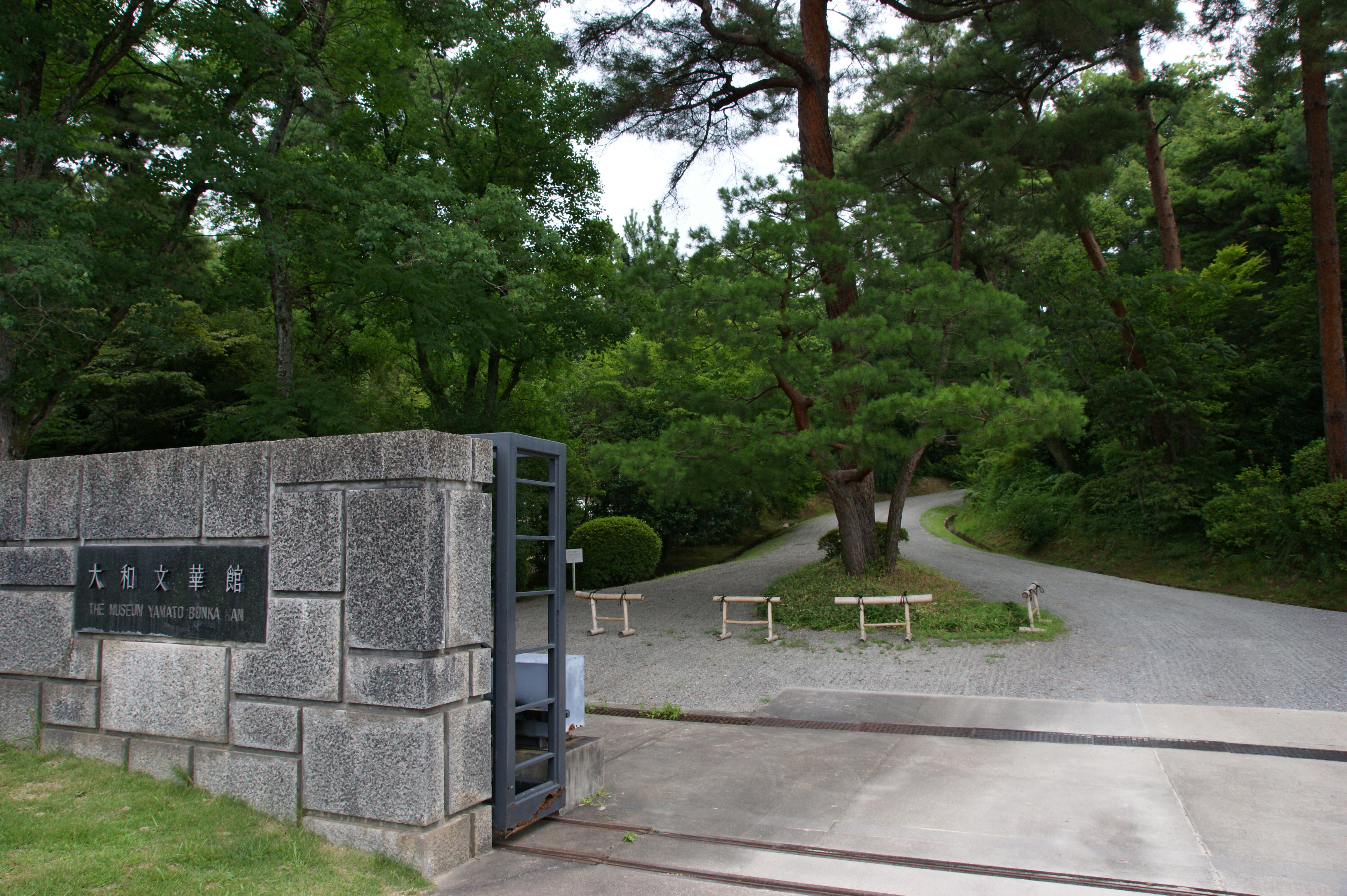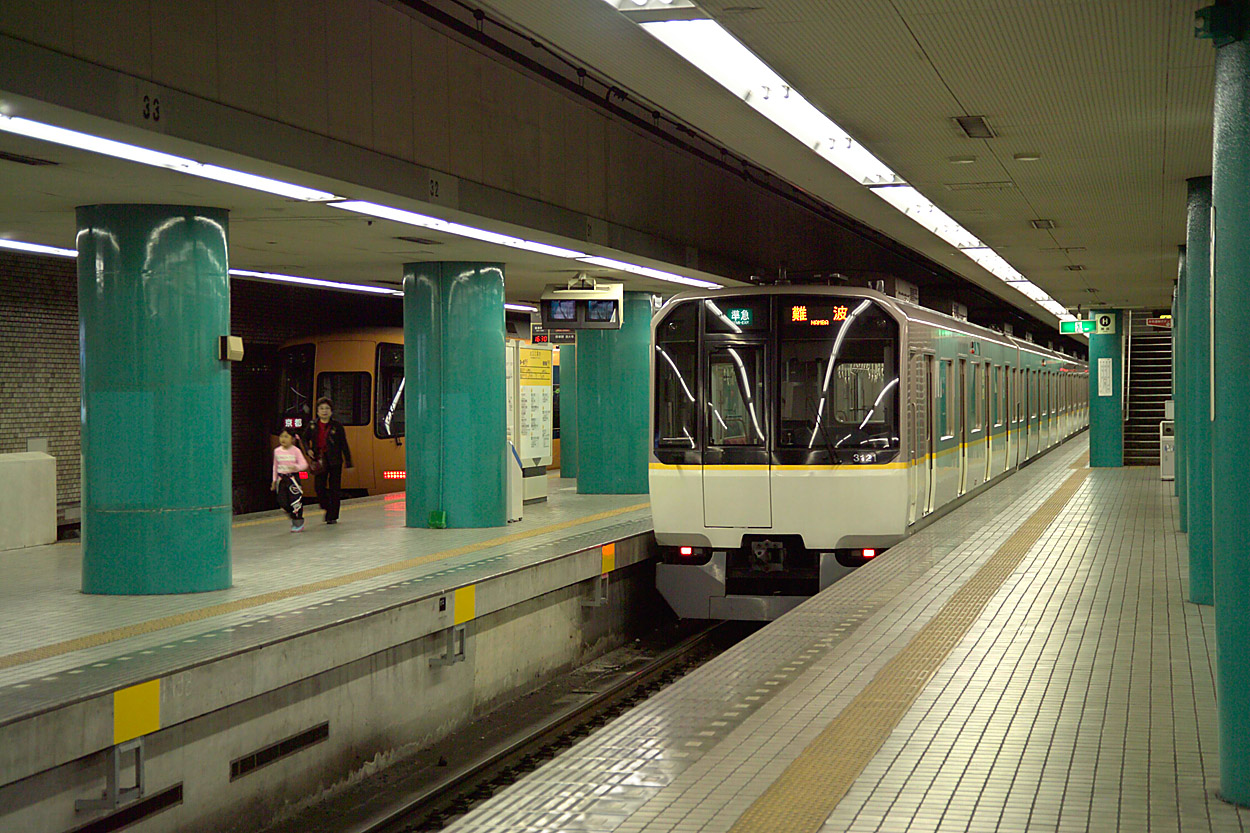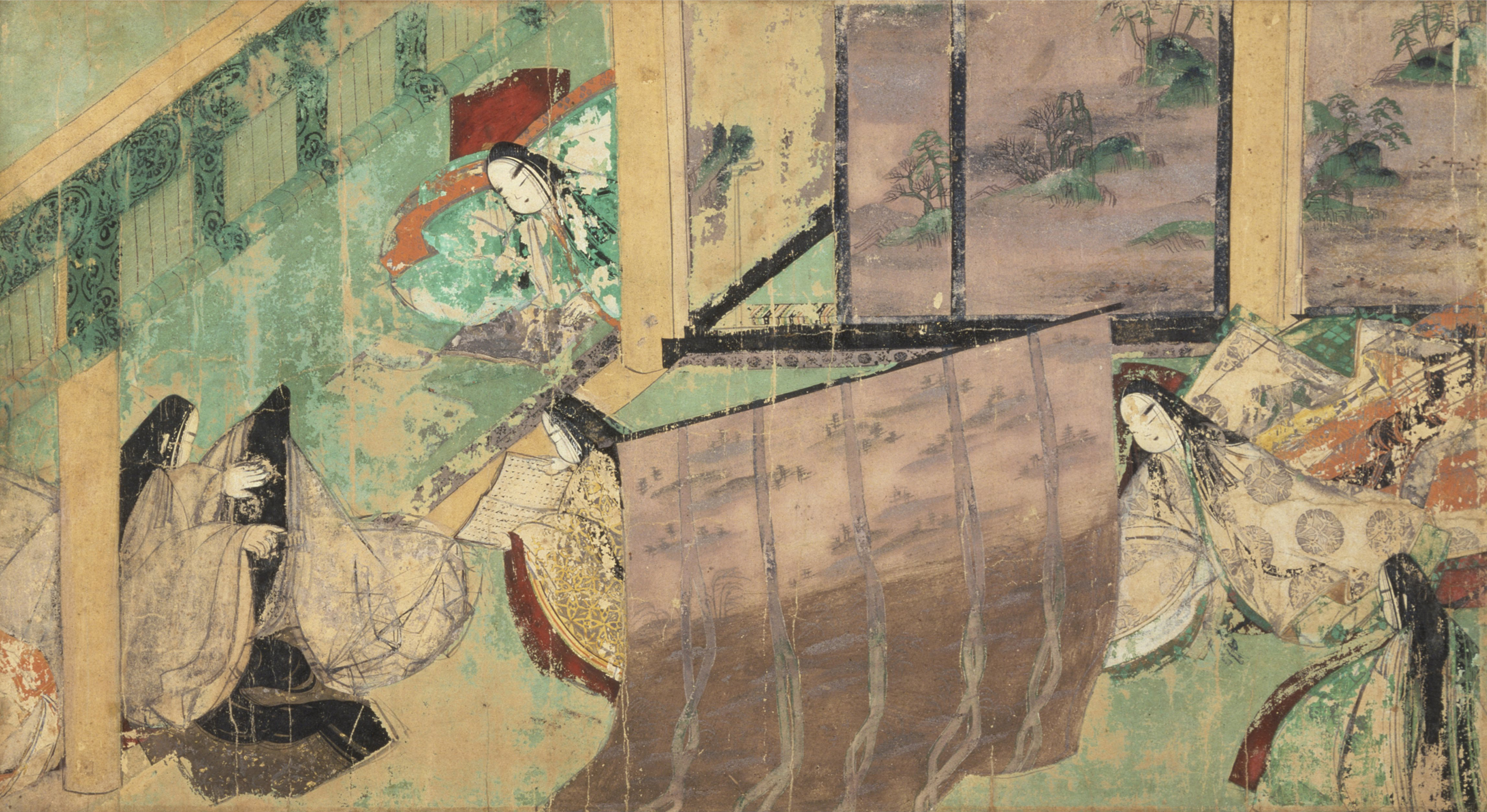|
Museum Of Japanese Art
is a museum of Asian art in Nara, Nara. The museum was established in 1960Martin, John ''et al.'' (1993) ''Nara: a Cultural Guide to Japan's Ancient Capital,'' p. 139./ref> to preserve and display the private collection of Kintetsu Corporation (named Kinki Nippon Railway Co., Ltd. till June 27, 2003). Collection This museum of Asian art has holdings of more than twenty thousand objects of sculpture, ceramics, lacquer, paintings, prints, textiles and calligraphy. The museum features a program of regularly changing exhibitions. The founding director in 1960 was art historian Yukio Yashiro. National treasures Two national treasures in the collection are illustrative scenes from . |
Yamato Bunkakan04n4592
was originally the area around today's Sakurai City in Nara Prefecture of Japan, which became Yamato Province and by extension a name for the whole of Japan. Yamato is also the dynastic name of the ruling Imperial House of Japan. Japanese history * Yamato people, the dominant ethnic group of Japan * Yamato period, when the Japanese Imperial court ruled from Yamato Province * Yamato clan, clan active in Japan since the Kofun period * ''Yamato-damashii'', the "Japanese spirit", or ''Yamato-gokoro'', the "Japanese heart/mind" * Yamato nadeshiko, the ideology of the perfect Japanese woman * Yamato Takeru, a legendary Japanese prince of the Yamato dynasty * Yamato-e, classical Japanese painting * ''Yamato-uta'', alternative term for ''waka'' (poetry) * Yamatai, ancient geographical term that may be associated with Yamato * Daiwa (other) is spelled using the same kanji as Yamato Geography Japan * Yamato Province, Japan, former province, present-day Nara Prefecture * Yama ... [...More Info...] [...Related Items...] OR: [Wikipedia] [Google] [Baidu] |
Nara, Nara
is the capital city of Nara Prefecture, Japan. As of 2022, Nara has an estimated population of 367,353 according to World Population Review, making it the largest city in Nara Prefecture and sixth-largest in the Kansai region of Honshu. Nara is a core city located in the northern part of Nara Prefecture bordering the Kyoto Prefecture. Nara was the capital of Japan during the Nara period from 710 to 794 as the seat of the Emperor before the capital was moved to Kyoto. Nara is home to eight temples, shrines, and ruins, specifically Tōdai-ji, Saidai-ji, Kōfuku-ji, Kasuga Shrine, Gangō-ji, Yakushi-ji, Tōshōdai-ji, and the Heijō Palace, together with Kasugayama Primeval Forest, collectively form the Historic Monuments of Ancient Nara, a UNESCO World Heritage Site. Etymology By the Heian period, a variety of different characters had been used to represent the name Nara: , , , , , , , , , , , , , , , and . A number of theories for the origin of the name "Nara" have been pro ... [...More Info...] [...Related Items...] OR: [Wikipedia] [Google] [Baidu] |
Kintetsu Corporation
, referred to as , is a Japanese railway holding company which primarily owns the Kintetsu Railway as well as Kintetsu World Express, Kintetsu Department Store, and its other 141 corporations, which are collectively known as Kintetsu Group. Its subsidiaries operates tourism, real estate, and shipping companies, and has a major rail car-building operation Kinki Sharyo which produces trains used in Japan, the United States, Egypt and Hong Kong. History , a passenger rail transit company in Kinki and Tokai regions, was founded after Kansai Express Railways merged with Nankai Railways on June 1, 1944. Kinki Nippon Railways changed its legal name in English to Kintetsu Corporation on June 28, 2003. On April 1, 2015, the corporation, was restructured into a holding company, splitting its railway, real estate, logistics and retail, and recreation service divisions. Kintetsu Corporation also changed the legal name to Kintetsu Group Holdings Co., Ltd. on the same day. Portfolio—subsi ... [...More Info...] [...Related Items...] OR: [Wikipedia] [Google] [Baidu] |
Yukio Yashiro
was a Japanese academic, art historian, Botticelli scholar and Director of the Institute for Art Research in Tokyo. Biography In 1960, he became the founding director of the Museum of Japanese Art ('' Yamato Bunkakan'') in Nara, Nara. This museum of Asian art was established to preserve and display the private collection of the Kintetsu Corporation (Kinki Nippon Railway Co., Ltd.). Honors * Charles Lang Freer Medal, September 15, 1965.Freer Gallery of Art. (1965)''Third presentation of the Charles Lang Freer medal, September 15, 1965.''/ref> Selected works In a statistical overview derived from writings by and about Yukio Yashiro, OCLC/WorldCat WorldCat is a union catalog that itemizes the collections of tens of thousands of institutions (mostly libraries), in many countries, that are current or past members of the OCLC global cooperative. It is operated by OCLC, Inc. Many of the OCL ... encompasses roughly 100+ works in 100+ publications in 7 languages and in 1,000+ libr ... [...More Info...] [...Related Items...] OR: [Wikipedia] [Google] [Baidu] |
Yoru No Nezame
is a c. 11th century Japanese story. It is one of the major representative Heian period texts. It is a courtly romance and belongs to the '' tsukuri monogatari'' genre.Nihon Koten Bungaku Daijiten Henshū Iinkai (1986:1898-1900) Composition The text exists in both three- and five-volume editions. Beside the title ''Yoru no Nezame'', it was also known as ''Yowa no Nezame'' and ''Nezame''Kubota (2007:198-199) . Which was the original title is unclear. Also unclear is the author. The Teika manuscript of '' Sarashina Nikki'' identifies the author as the daughter of Sugawara no Takasue (1008 – c. 1059); however, there are no other means to corroborate this. Linguistic analysis suggests a post-1086 composition. The text as a whole is judged to be a c. 11th-century work. Major portions of the middle and end are no longer extant. Their contents may be inferred from other sources such as ''Mumyōzōshi'', '' Shūi Hyakuban Utaawase'', '' Fūyō Wakashū'', ''Yoru no Nezame Monogatari' ... [...More Info...] [...Related Items...] OR: [Wikipedia] [Google] [Baidu] |
List Of National Treasures Of Japan (paintings)
The term "National Treasure (Japan), National Treasure" has been used in Japan to denote Cultural Properties of Japan, cultural properties since 1897. The definition and the criteria have changed since the inception of the term. These paintings adhere to the current definition, and were designated national treasures when the Law for the Protection of Cultural Properties was implemented on June 9, 1951. As such, they are restricted in transfer and may not be exported. Owners are required to announce any changes to the National Treasures such as damage or loss and need to obtain a permit for changes in location, transfer of ownership or intended repairs. The items are selected by the Ministry of Education, Culture, Sports, Science and Technology based on their "especially high historical or artistic value". This list contains 166 paintings from 7th-century Asuka period to the early modern 19th-century Edo period. In fact the number of paintings presented is more than 166, because in ... [...More Info...] [...Related Items...] OR: [Wikipedia] [Google] [Baidu] |
Chinese Piling Paintings
The Piling School was a genre of Chinese painting, named for its place of origin, now Changzhou in Jiangsu province. The style was influenced by contact with Japan, and examples are found almost exclusively in Japan and particularly in collections associated with the great Japanese Buddhist monasteries. Origin Such paintings and associated art works are a reflection of the vigorous medieval overseas trade between China and Japan. Piling () itself was a part of Changzhou close to Lake Tai in Jiangsu Province. Many other genre artists can be associated with this general area. Although their surviving works are few, the clear influence of their painting can be readily seen in shards of Yuan period blue-and-white porcelain from the Jingdezhen production area. Categorization Works of the Piling School may be rightly regarded as folk art, folk or popular works that have no association with named artists. An exception are the hanging scrolls in the Chion-in Monastery collection in Ky ... [...More Info...] [...Related Items...] OR: [Wikipedia] [Google] [Baidu] |
Art Museums And Galleries In Japan
Art is a diverse range of human activity, and resulting product, that involves creative or imaginative talent expressive of technical proficiency, beauty, emotional power, or conceptual ideas. There is no generally agreed definition of what constitutes art, and its interpretation has varied greatly throughout history and across cultures. In the Western tradition, the three classical branches of visual art are painting, sculpture, and architecture. Theatre, dance, and other performing arts, as well as literature, music, film and other media such as interactive media, are included in a broader definition of the arts. Until the 17th century, ''art'' referred to any skill or mastery and was not differentiated from crafts or sciences. In modern usage after the 17th century, where aesthetic considerations are paramount, the fine arts are separated and distinguished from acquired skills in general, such as the decorative or applied arts. The nature of art and related concepts, ... [...More Info...] [...Related Items...] OR: [Wikipedia] [Google] [Baidu] |
Museums Of Japanese Art
A museum ( ; plural museums or, rarely, musea) is a building or institution that cares for and displays a collection of artifacts and other objects of artistic, cultural, historical, or scientific importance. Many public museums make these items available for public viewing through exhibits that may be permanent or temporary. The largest museums are located in major cities throughout the world, while thousands of local museums exist in smaller cities, towns, and rural areas. Museums have varying aims, ranging from the conservation and documentation of their collection, serving researchers and specialists, to catering to the general public. The goal of serving researchers is not only scientific, but intended to serve the general public. There are many types of museums, including art museums, natural history museums, science museums, war museums, and children's museums. According to the International Council of Museums (ICOM), there are more than 55,000 museums in 202 countries ... [...More Info...] [...Related Items...] OR: [Wikipedia] [Google] [Baidu] |
Museums In Nara, Nara
A museum ( ; plural museums or, rarely, musea) is a building or institution that cares for and displays a collection of artifacts and other objects of artistic, cultural, historical, or scientific importance. Many public museums make these items available for public viewing through exhibits that may be permanent or temporary. The largest museums are located in major cities throughout the world, while thousands of local museums exist in smaller cities, towns, and rural areas. Museums have varying aims, ranging from the conservation and documentation of their collection, serving researchers and specialists, to catering to the general public. The goal of serving researchers is not only scientific, but intended to serve the general public. There are many types of museums, including art museums, natural history museums, science museums, war museums, and children's museums. According to the International Council of Museums (ICOM), there are more than 55,000 museums in 202 countries ... [...More Info...] [...Related Items...] OR: [Wikipedia] [Google] [Baidu] |





